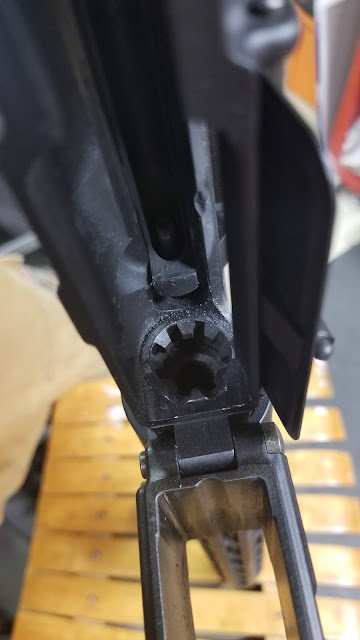3D Printed Guns
Introduction:
3D printing opened up opportunities for hobbyists to develop and create whatever they wanted. The technology has evolved and progressed to include things such as carbon-fiber impregnated polymers, metal inserts, and UV resin. 3D printing technology has expanded to the field of firearms.In fact, there is now an entire subculture of the gun community dedicated to the progression and development of 3D printed firearms. I'm going to do my best to give a brief overview of the really interesting things that have come out of the 3D printed gun community, as well as go into some of the controversy surrounding 3D printed firearms and what they mean for the 1st and 2nd Amendments.
Details:
3D printed firearms tend to come in a couple variations. First, there are the firearms that have 3D printed components, but incorporate many different crucial firearm components that aren't regulated in many instances. This would include, for example, 3D printed glock frames that still require the slide and fire-control parts. Hobbyists have made many different firearm receivers into 3D printable parts, including Tec-9's and Skorpions.
 |
| A 3D printed Tec-9 lower receiver: https://i.redd.it/nx29czwzjvf31.png |
The benefit of these types of 3D printed guns is that they typically can work pretty well, as the pressure-bearing components are actual gun components. They, of course, are limited in service life, as things such as the layers separating and cracks in the receiver are bound to happen when a plastic part replaces a metal one.
 |
| Source |
The other variants of 3D printed guns are the guns that are entirely or almost entirely 3D printed. These would, popularly, include the Liberator pistol, pictured at the top of this post. The Liberator pistol in entirely 3D printed, except for the roofing nail required to function as a firing pin. These have serious drawbacks though, only functioning for a couple of shots at best before destroying themselves.
There is also a new 3D printed component that has just recently been made public, the "swift link". This effectively replaces the coat hanger portion of a coat-hanger-machinegun. This small 3D printed component fits into the lower receiver of a semi-automatic AR-15. The part pushes on the disconnector when the bolt rides forward and released the hammer, creating a fully-automatic rifle.
 |
| Source |
Now, it needs to be mentioned that this is super illegal and should only be made by individuals that have the necessary licenses. I am not advocating that anyone other than licensed manufacturers of machineguns do this, but the 3D printed gun community has developed this and put it in the public domain.
With these guns and parts, it's less about the functionality of the gun itself, and more about the idea it represents. With 3D printing and a decentralized network of file sharing, complete gun control is rendered impossible.
Politics and Controversy:
The genesis of 3D printed firearms has brought with it a slew of controversy and begged the question: how can this be regulated? In short, it can't, but lets dive into that. 3D printing itself has always been a very niche market, due largely to the fact that 3D printers were previously very expensive. Since 3D printers can now be bought for around $200, the 3D printed gun community has exploded. There have been attempts to put a damper on the community by removing file distribution points such as Defense Distributed, but this has succeeded in pushing the community underground, with peer-to-peer file sharing going on without being hindered. Small file-sharing sites, such as the one run by notorious 3D gunner, IvanTheTroll, are available to anybody who cares to find them.
3D printed firearms have, interestingly, brought up issues related to free speech and the 1st amendment. The arguments largely revolve around question of whether or not code is free speech and thereby protected under the first amendment. On one side, the 3D gunners advocate for the idea that the code used to run Ghost Gunner CNC mills or 3D printers is speech, and the government's efforts to remove the code from the internet amounts to censorship. The other side of this is that code does not qualify as free speech and can therefore be removed or censored without consequence. I'm not a lawyer, so I don't know what the right answer is to this, but as someone with basic experience coding, I would argue that it amounts to a similar category to art, in that it is a creative design by the creator.
In terms of the 2nd Amendment, 3D printed guns effectively ensure that firearms will never completely be taken out of the hands of people. As the technology improves, the quality of 3D printed guns will improve as well. As it stands, we are already seeing things like AK's and AR's being printed, so even an assault weapon's ban would never be totally effective. In a really interesting way, the progression of technology has been used to further secure rights that were outlined over 200 years ago.
Conclusion:
3D printed gun enthusiasts have worked in a decentralized network to engineer, iterate, and develop a virtual arsenal of guns that are free to be utilized by people online, even those outside of the US in country's with more strict gun laws. This has made an incredible, digital age insurrection against governments, and moves far faster than the speed of regulation. No matter what is done by people seeking to censor or regulate, you can't stop the signal.



Comments
Post a Comment